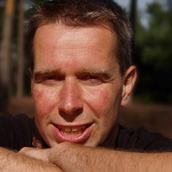
Hendrik Poorter
Biosketch:
Hendrik Poorter is an ecophysiologist
currently employed at the Horticultural Department of Wageningen University in the
Netherlands. He focuses on the general response of plants to their a-biotic environment and aims to
provide a comprehensive overview on how (specific groups of) plants acclimate
to various environmental conditions. This involves establishing generalized dose-response
curves through meta-analysis of a substantial number of experiments, covering
approximately 100 (eco)physiological
variables (see www.metaphenomics.org for around 250 dose-response curves).
Another area of interest for Poorter is how to set up experiments under
controlled conditions, with a focus on how to grow plants, and how to apply a-biotic stress to plants in
ways that yield meaningful insights about what plants experience outside in the
field.
Title:
How to make experiments under controlled
conditions relevant for understanding plants growing in the field ?
Abstract:
In
this talk I discuss how representative plants grown under controlled conditions
(growth chamber, glasshouse) are for those growing in the field. A
meta-analysis showed that lab-grown plants had faster growth rates, higher N concentrations,
and higher SLA. They remained smaller, however, because lab plants are grown
for much shorter time. We compared glasshouse and growth chamber conditions
with those in the field and found that the ratio between the daily amount of
light and daily temperature (photothermal ratio) was consistently lower under
controlled conditions, especially for experiments with Arabidopsis. This may
strongly affect a plant's source:sink ratio and hence their overall morphology
and physiology.
Plants in the field also grow at higher plant densities. A subsequent meta-analysis showed that a doubling in density leads on average to 34% smaller plants with strong negative effects on tiller or side-shoot formation and yield per plant, moderate effects on allocation and photosynthesis, but little effect on plant height or reproductive effort. We found the r2 between lab and field phenotypic data rather modest (0.26), although still larger than the across-genotype r2 for year-to-year variation in yield in the field (0.08). Based on these insights, I discuss various alternatives to facilitate the translation from lab results to the field, including options to apply growth regimes closer to field conditions.
- Poorter et al. (2016) Pampered inside, pestered outside? Differences and similarities between plants growing in controlled conditions and in the field. New Phytol. 212: 838.
- Studying at Goethe University
- International applicants
- Faculties
- Overview of study programmes
- Programme for refugees
- GRADE
- Goethe Business School (continuing education)
- Research at Goethe University
- Scientific news
- Goethe Welcome Center (for international researchers)
- Collaborative research projects
- Individual research
- Visiting fellowships
- Endowed chairs
- About the University
- News-in-brief
- University administration
- Campus locations
- Campus life
- University archives (German)
- Rhine-Main-Universities






